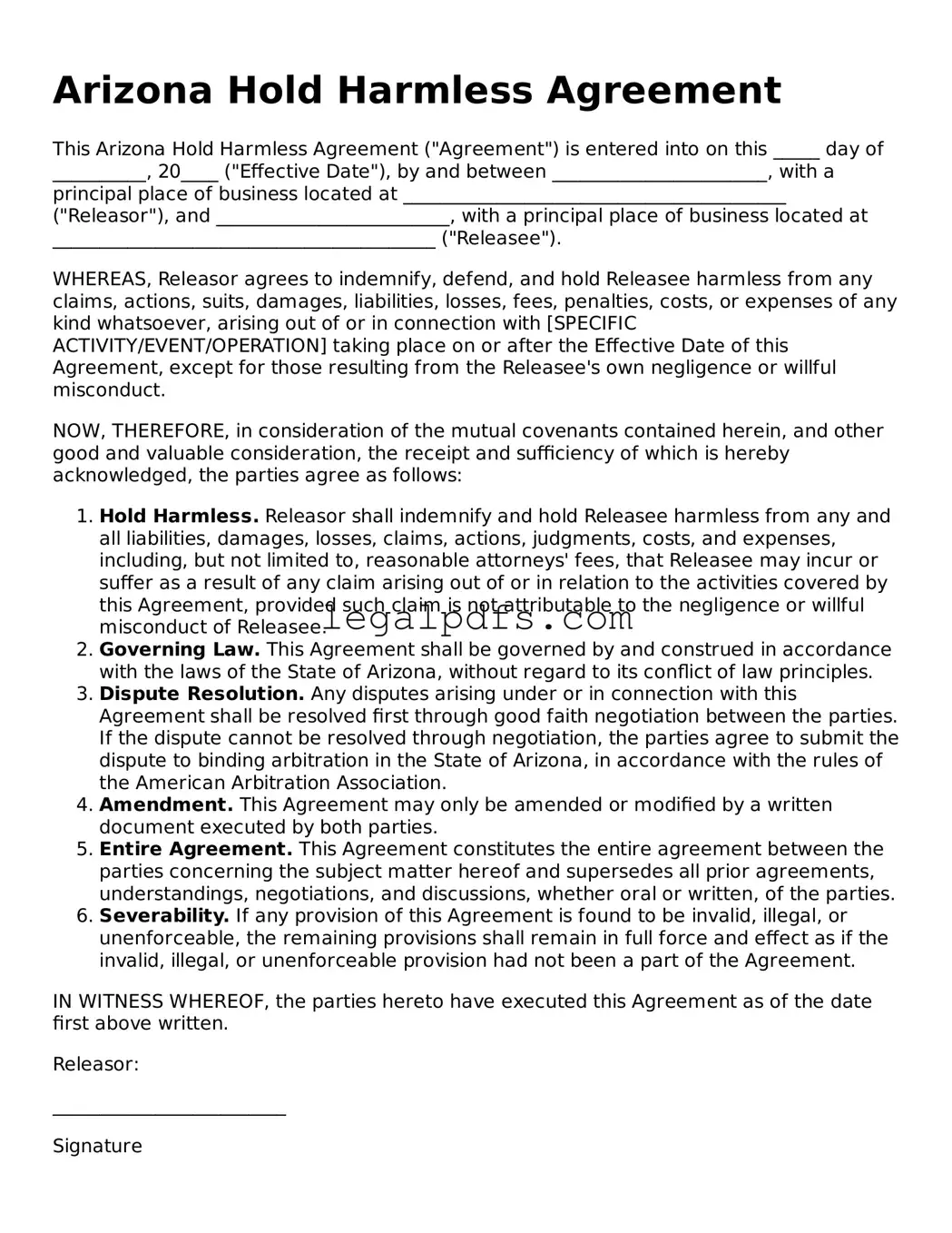Arizona Hold Harmless Agreement
This Arizona Hold Harmless Agreement ("Agreement") is entered into on this _____ day of __________, 20____ ("Effective Date"), by and between _______________________, with a principal place of business located at _________________________________________ ("Releasor"), and _________________________, with a principal place of business located at _________________________________________ ("Releasee").
WHEREAS, Releasor agrees to indemnify, defend, and hold Releasee harmless from any claims, actions, suits, damages, liabilities, losses, fees, penalties, costs, or expenses of any kind whatsoever, arising out of or in connection with [SPECIFIC ACTIVITY/EVENT/OPERATION] taking place on or after the Effective Date of this Agreement, except for those resulting from the Releasee's own negligence or willful misconduct.
NOW, THEREFORE, in consideration of the mutual covenants contained herein, and other good and valuable consideration, the receipt and sufficiency of which is hereby acknowledged, the parties agree as follows:
- Hold Harmless. Releasor shall indemnify and hold Releasee harmless from any and all liabilities, damages, losses, claims, actions, judgments, costs, and expenses, including, but not limited to, reasonable attorneys' fees, that Releasee may incur or suffer as a result of any claim arising out of or in relation to the activities covered by this Agreement, provided such claim is not attributable to the negligence or willful misconduct of Releasee.
- Governing Law. This Agreement shall be governed by and construed in accordance with the laws of the State of Arizona, without regard to its conflict of law principles.
- Dispute Resolution. Any disputes arising under or in connection with this Agreement shall be resolved first through good faith negotiation between the parties. If the dispute cannot be resolved through negotiation, the parties agree to submit the dispute to binding arbitration in the State of Arizona, in accordance with the rules of the American Arbitration Association.
- Amendment. This Agreement may only be amended or modified by a written document executed by both parties.
- Entire Agreement. This Agreement constitutes the entire agreement between the parties concerning the subject matter hereof and supersedes all prior agreements, understandings, negotiations, and discussions, whether oral or written, of the parties.
- Severability. If any provision of this Agreement is found to be invalid, illegal, or unenforceable, the remaining provisions shall remain in full force and effect as if the invalid, illegal, or unenforceable provision had not been a part of the Agreement.
IN WITNESS WHEREOF, the parties hereto have executed this Agreement as of the date first above written.
Releasor:
_________________________
Signature
Print Name: _________________________
Releasee:
_________________________
Signature
Print Name: _________________________
